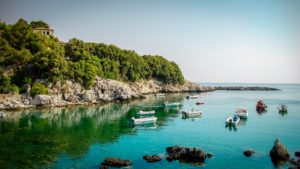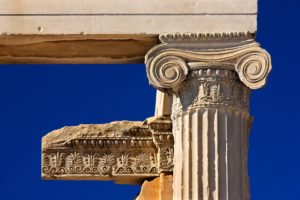Volcanic island Milos arches around her central caldera, which “arms” her landscape with dramatic coastal sceneries of colorful and surreal rock formations.
Milos’ most famous product, the iconic Venus de Milo, is secured far away in the Louvre museum, but dozens of beaches (the most of any Cycladic island) and a series of quaint little villages make up for it, as current, stunning attractions.
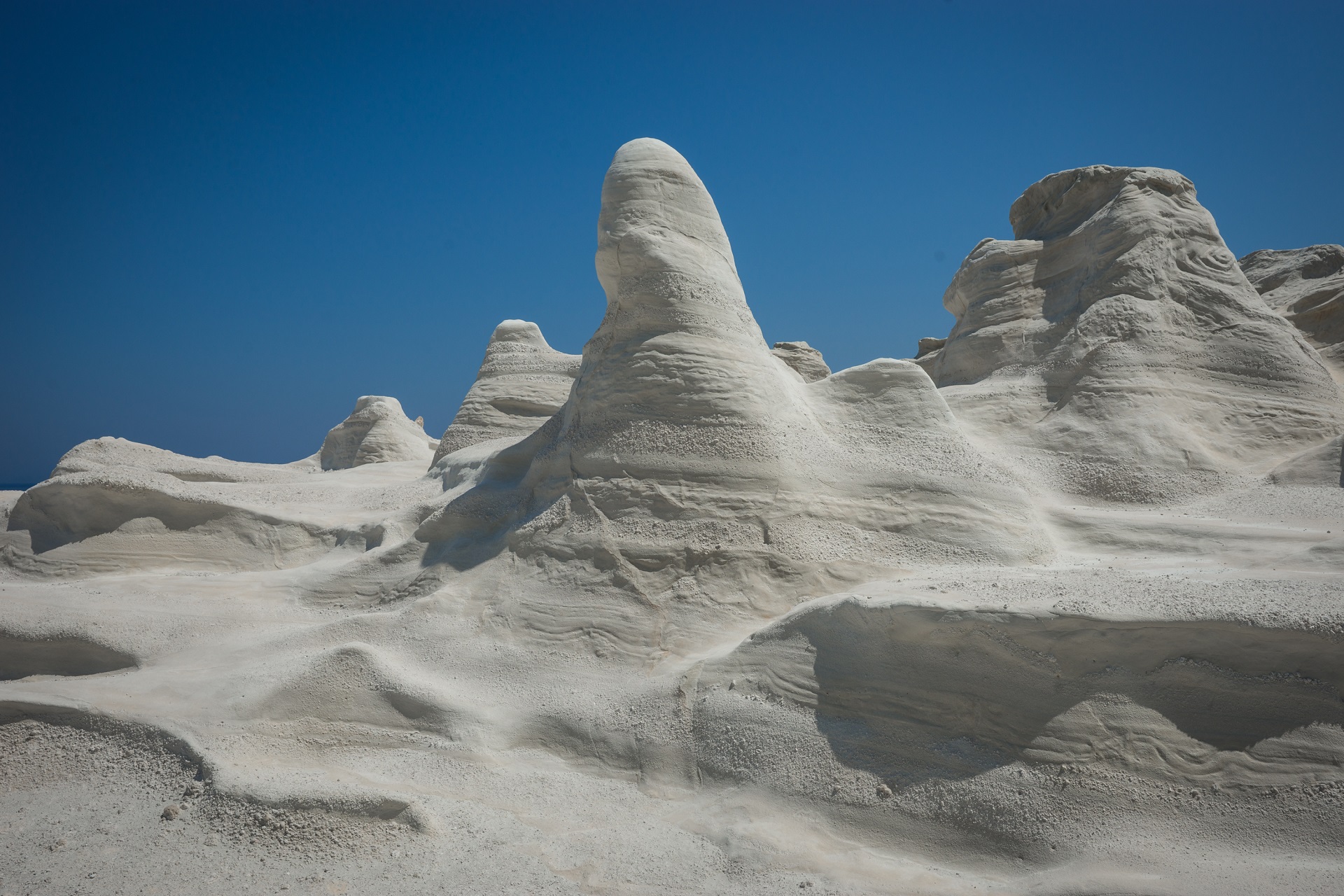
What you might not be aware of, is Milos’ fascinating history of mineral extraction dating from antiquity, when obsidian was exported to the Minoan world of Crete. Today Milos is the biggest bentonite and perlite mining site in the EU.
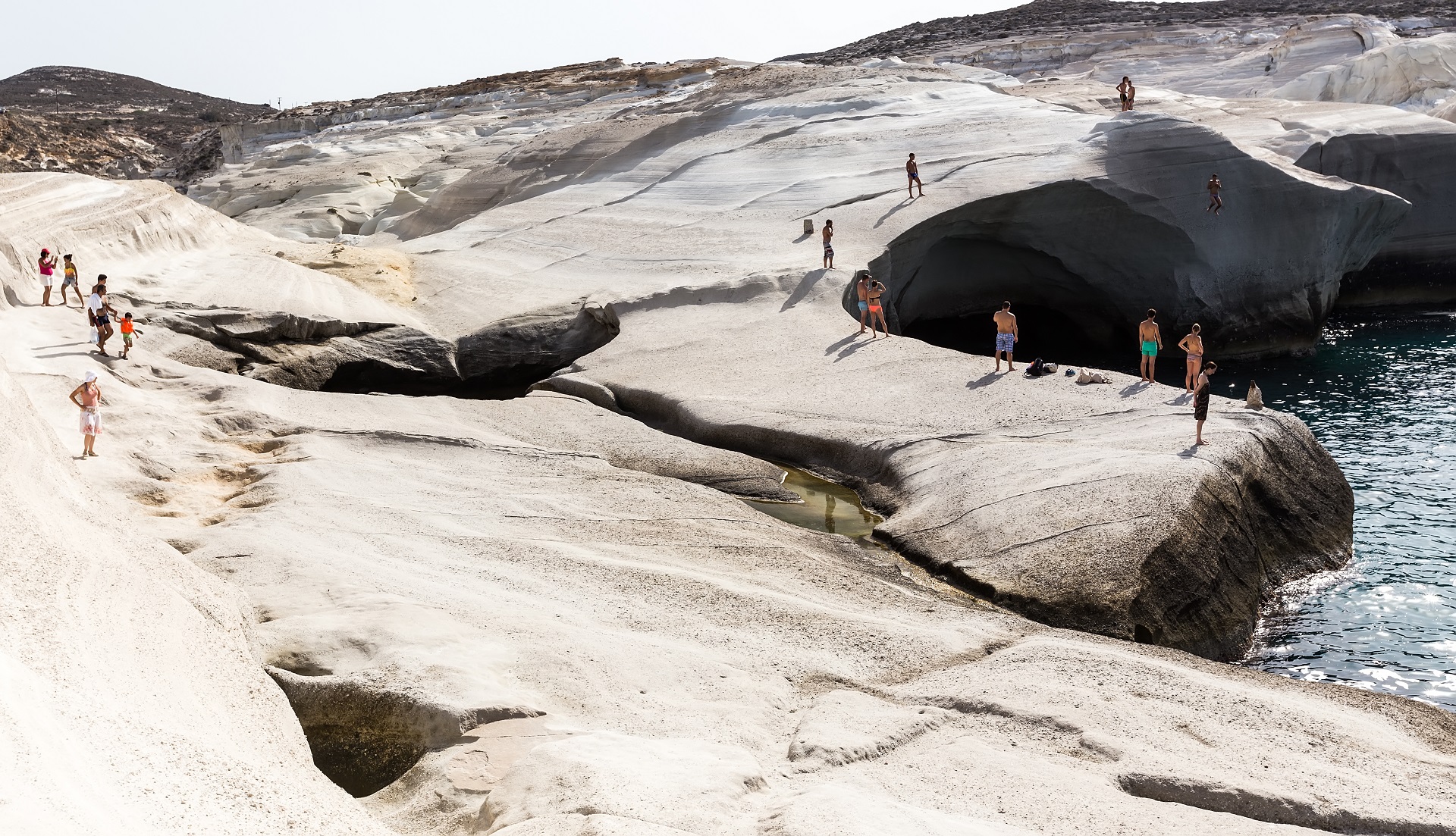
Things to do and places to go in Milos
(often seen as Mylos or Melos mɛlɒsˌ -oʊsˌ ˈmiːlɒs, -loʊs/; Modern Greek: Μήλος)
(often seen as Mylos or Melos mɛlɒsˌ -oʊsˌ ˈmiːlɒs, -loʊs/; Modern Greek: Μήλος)
1. Hit the beaches
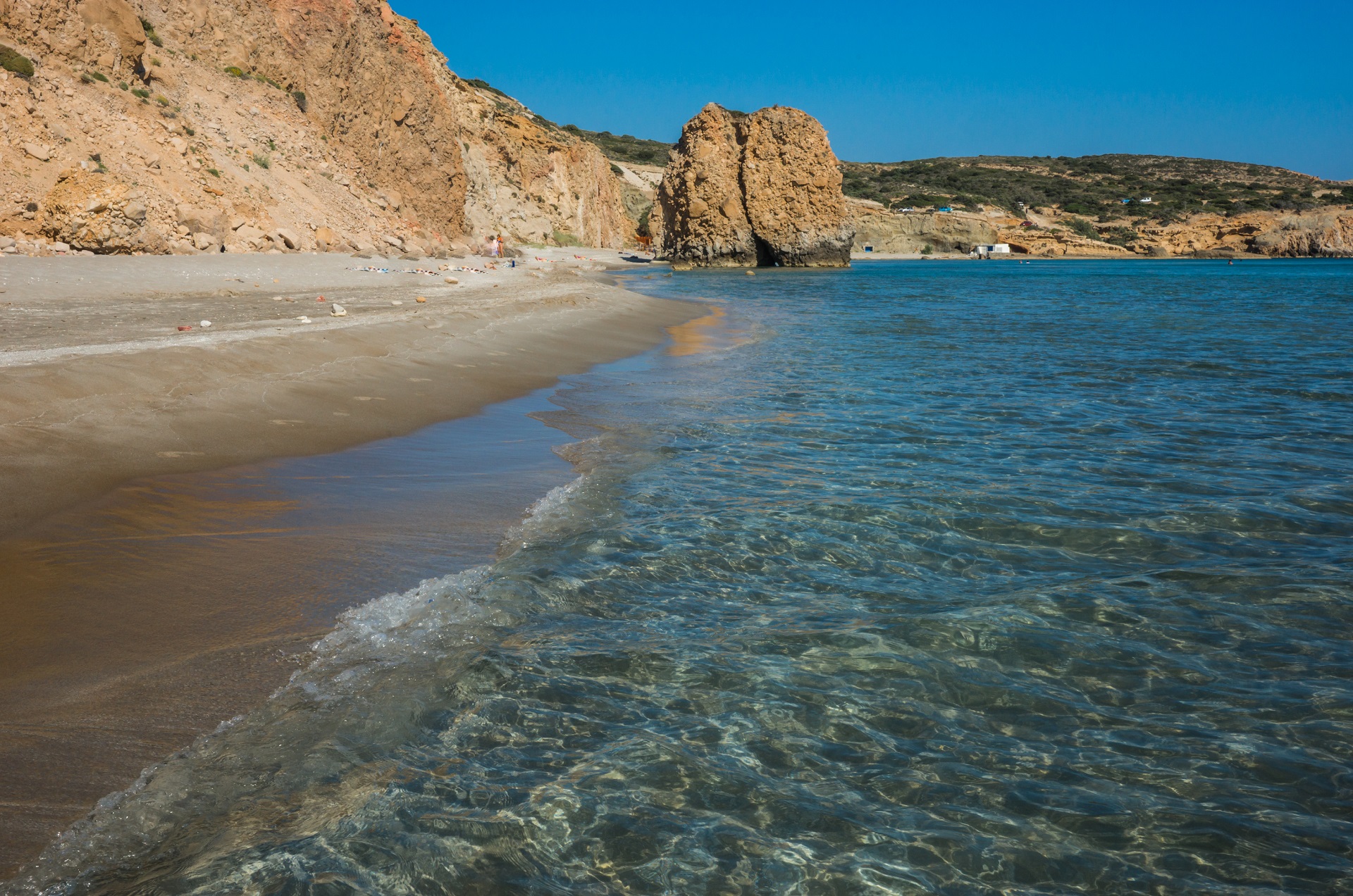
And try to visit as many beaches as you can! There are roughly around 70 beaches around the island, of no longer than 1km of width. We recommend you visit them by boat, a relatively easy task, which will save you time and hardship.
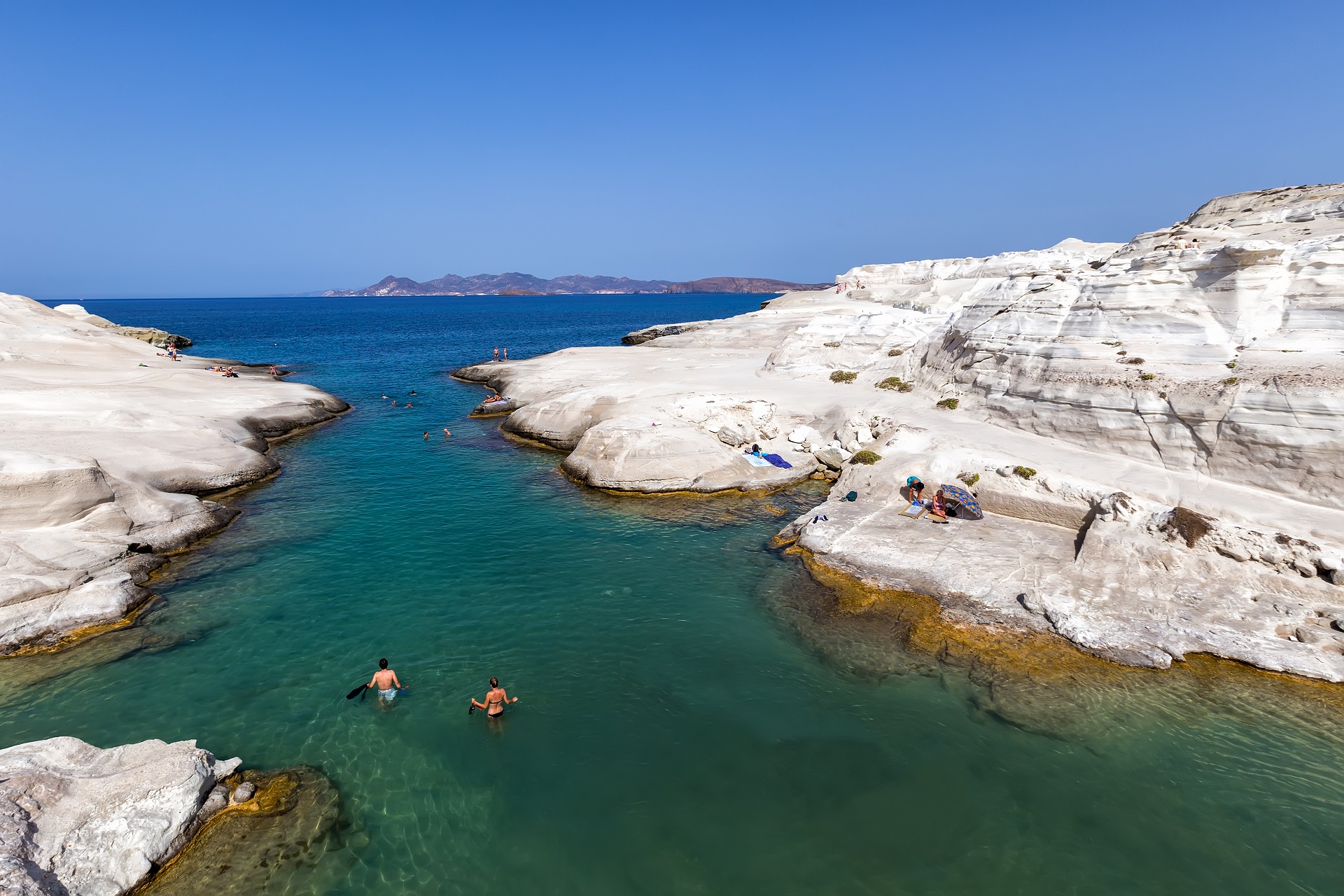
You will adore the white rocky landscape that embraces Sarakíniko beach and forms a once-in-a-lifetime encountered lunar landscape.
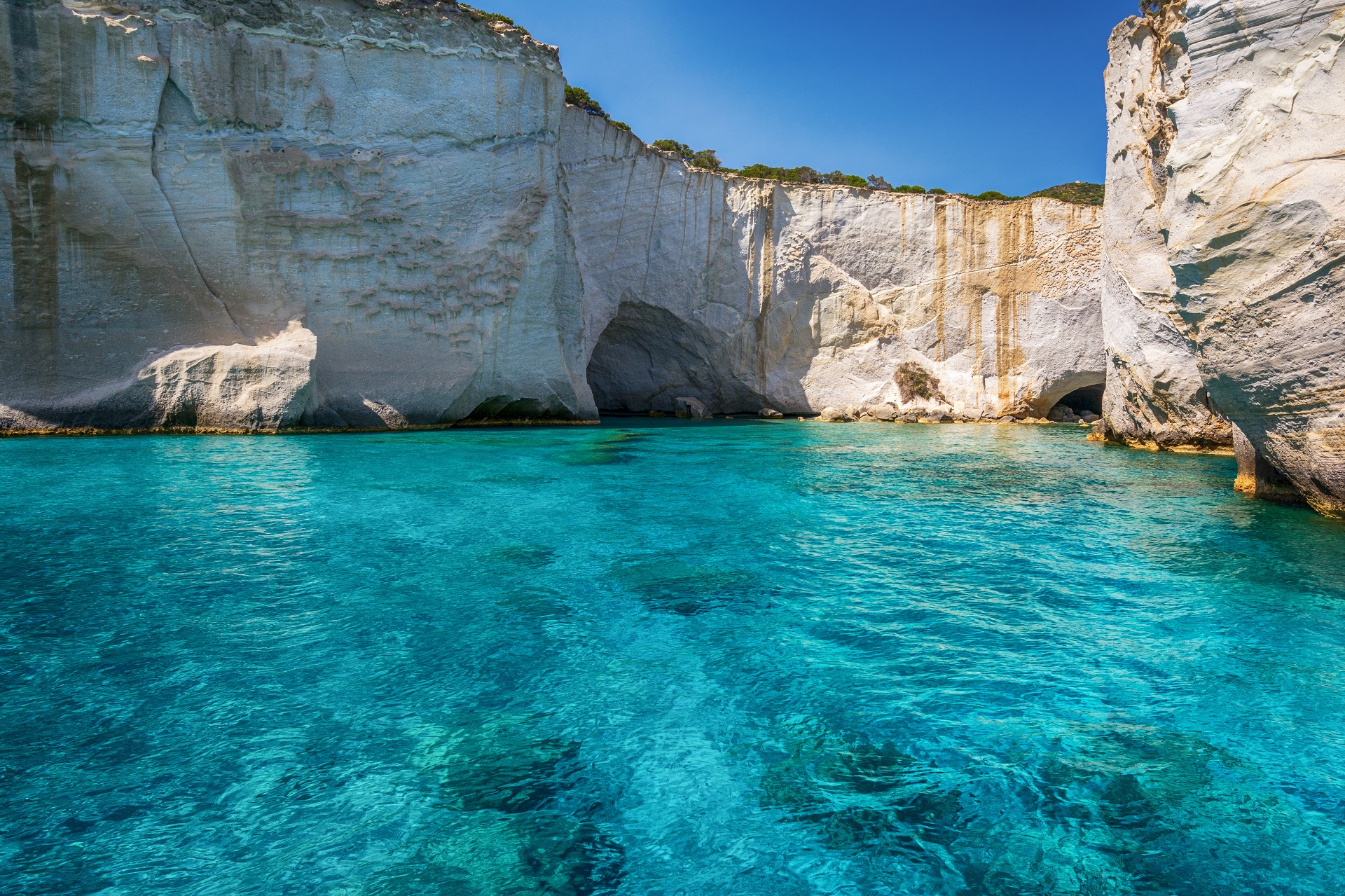
On Kléftiko beach, which can be reached only by boat, you can dive in secluded volcanic caves within the crystal clear waters of the Aegean. Add to your itinerary, the wild beauty of Alogomántra, the open caves of Papáfragkas, the magical Ahivadolímni – the biggest beach on the island with an organized campsite – and the beaches of Fyripláka, Yérakas and Tsigrádos adorned with outlandish grayish-red rocks.
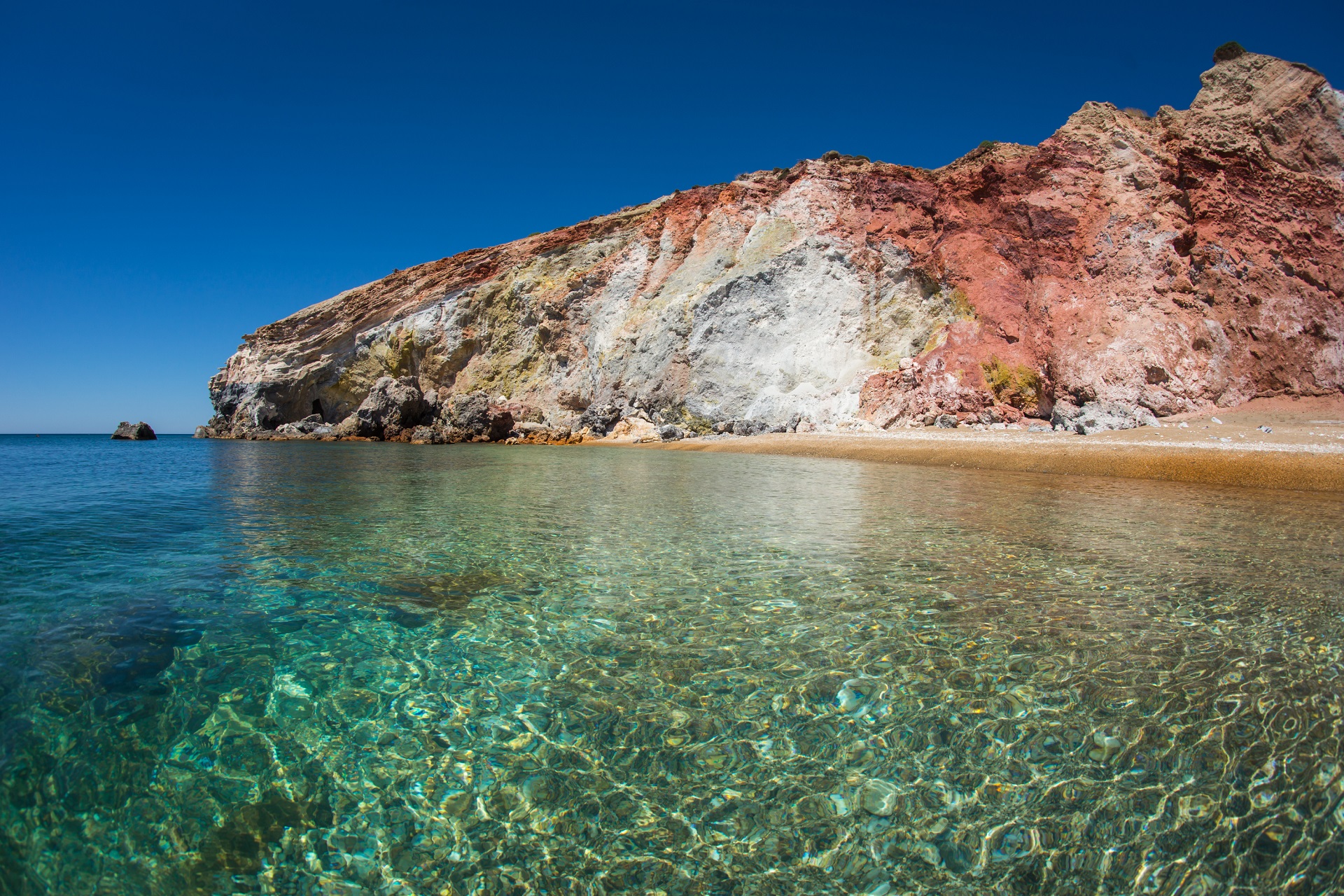
2. Tour around the picturesque villages
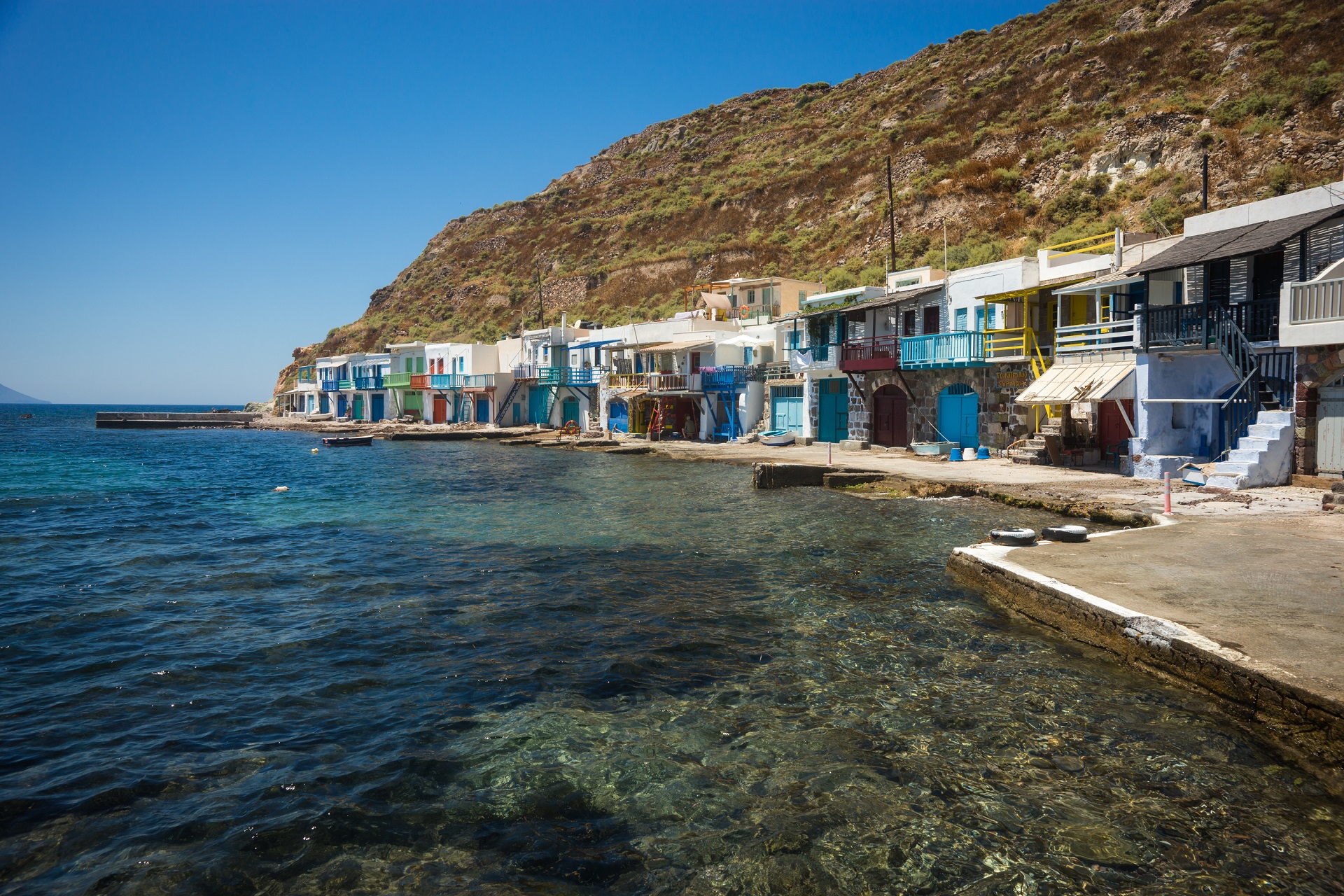
The central settlement of Milos is named Plaka, an adorable town nestled 220 meters above sea level, and built into a mountainside. From there you can enjoy the breathtaking sunset at the top of the mountain, by the medieval castle and the church of Panagia Thallasitra. It is this particular sunset, which gave the nickname “Island of Lovers” to Milos.
Strolling through the paved streets of Plaka, you can’t help but feel the warmth of the town’s people, as you watch them speak through their windows to one another from their tightly built homes. The sound of local music is always there to keep you company, as you walk your way up to the old castle, the “Kastro,” and church, to see the sunset. The center of Plaka is brimming with lovely restaurants, tavernas, cafés, and bars.
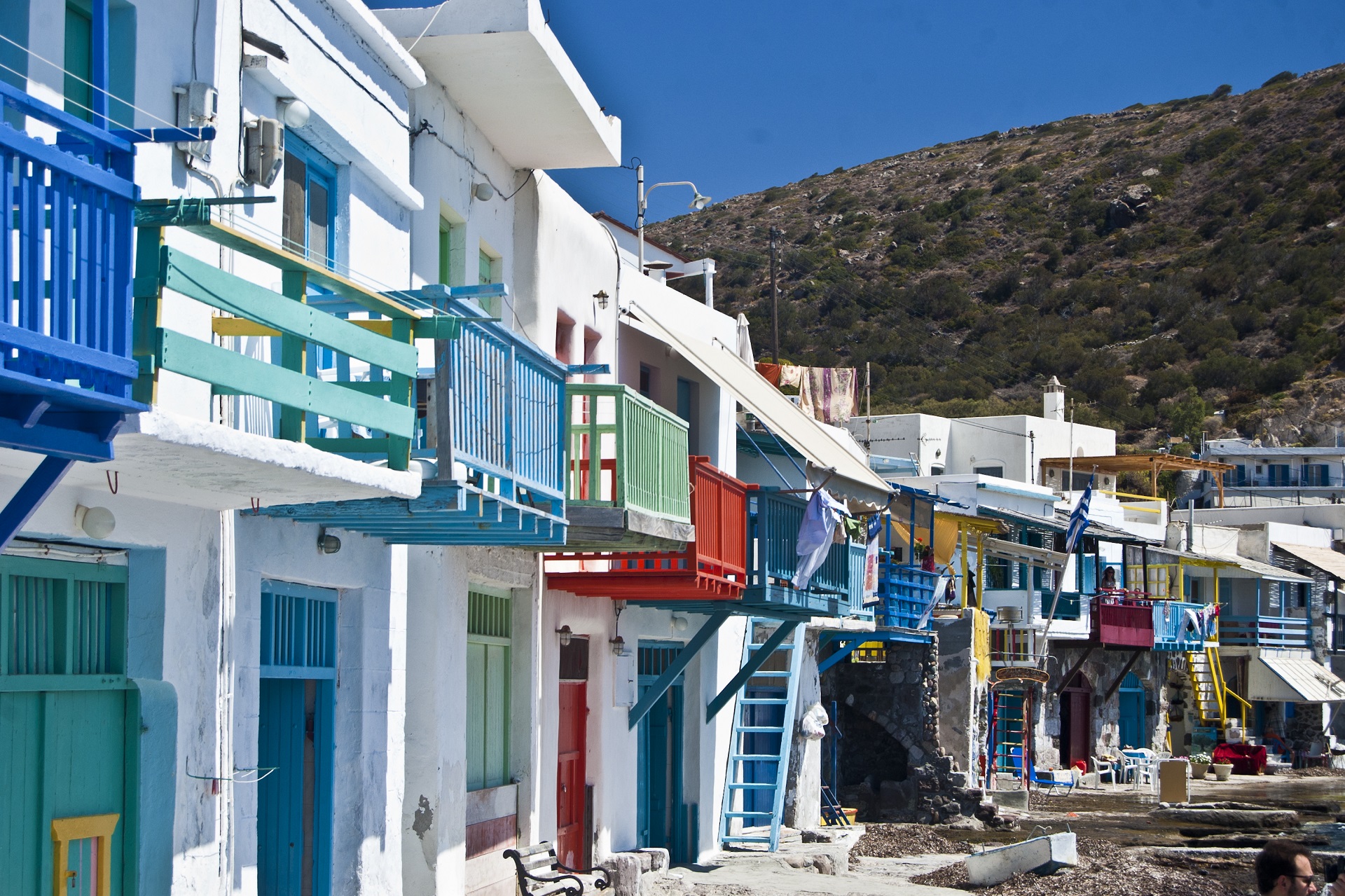
Pollonia is another ancient town that used to be named Apollonia, after the ancient Greek god of the sun, Apollo. This fishing village on the north-western tip of the island is truly enchanting with many restaurants, cafés, and stores.
Only on Milos and it’s little sister, Kimolos, will you encounter the quaint small colorful houses by the sea, called “sýrmata.” Fishers used them as a shelter for their boats in winter.
Another Milos highlight is the archetypical white-washed Chóra, peppered with beautiful churches, such as Panayiá Korfiátissa and the Catholic Church.
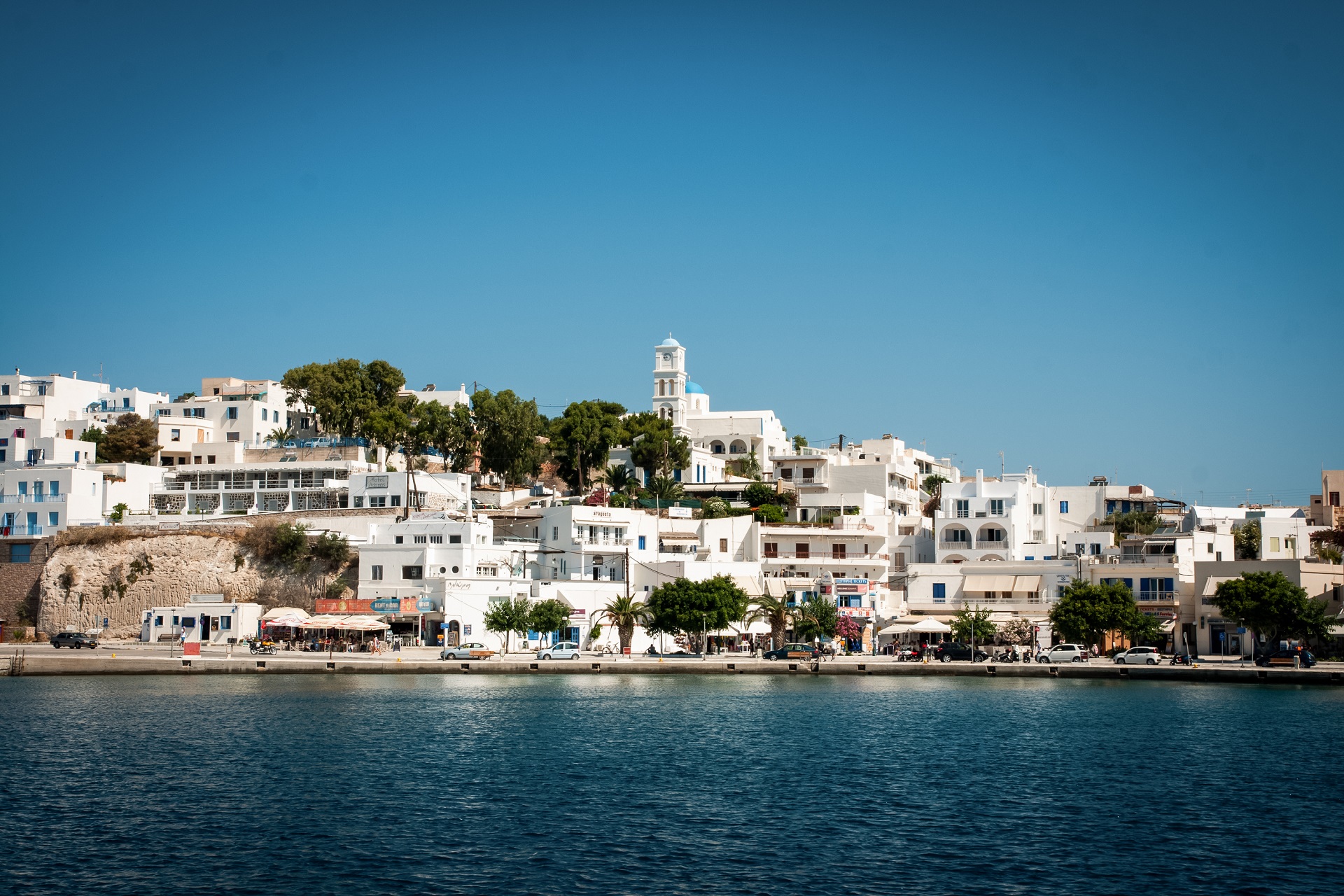
Adámantas, built like an amphitheater overlooking the Aegean, is the second biggest natural harbor in Greece and the most famous for its frenetic nightlife.
3. Visit the numerous museums, ancient mines, and the catacombs
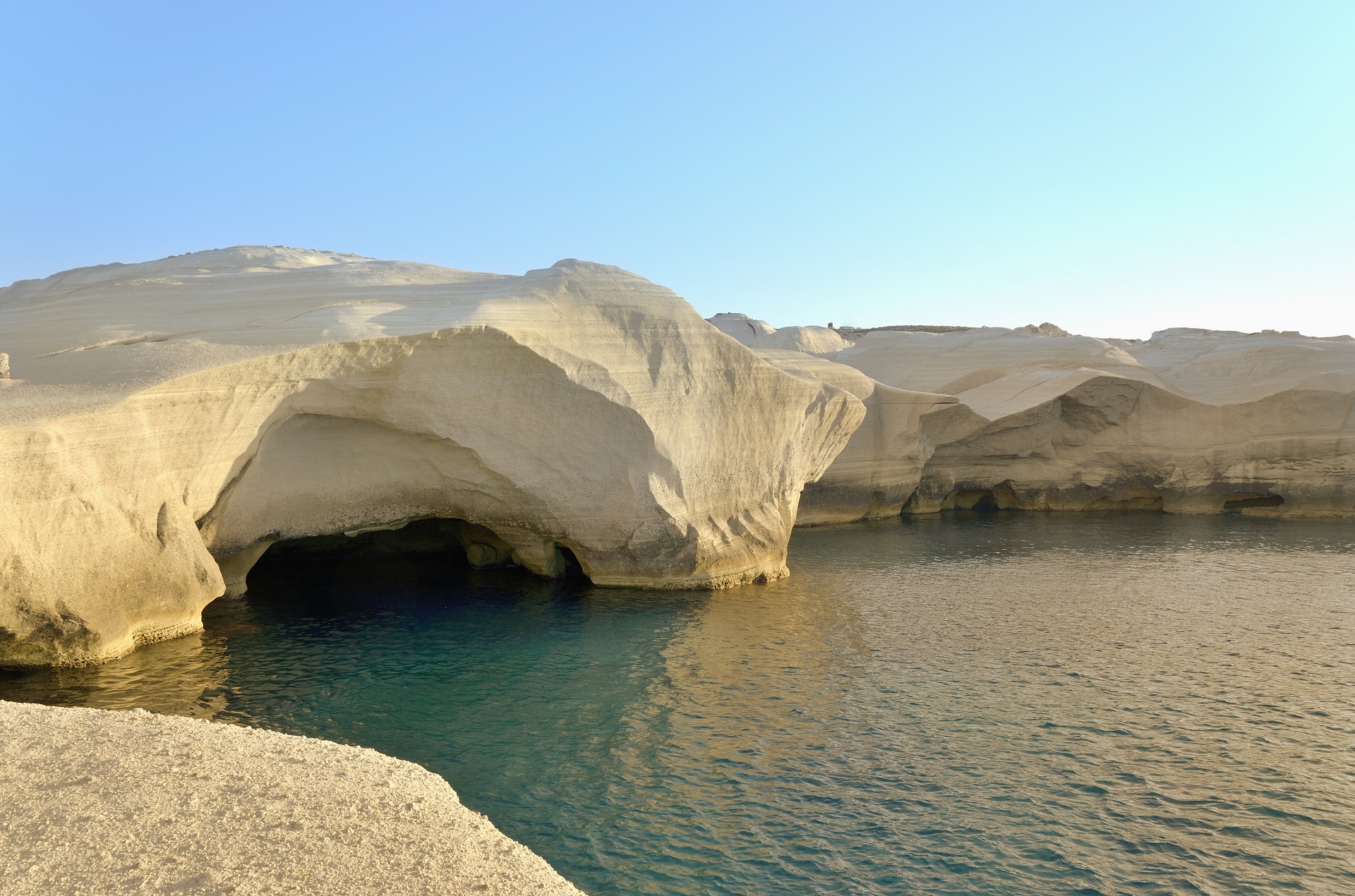
Yep, you read it correctly! After all, Milos boasts the biggest network of dirt roads on the Cyclades. Set off on a walking tour following ancient paths, which used to be the only “road network” until the previous century.
Throughout Milos, you can find catacombs, carved out during ancient times from the soft rock. The must-see catacombs are near the village of Tripiti. They are known as an early Christian underground cemetery and were dug by early Christians (around 200 AD). They number over 300 graves, in which it is believed that between 5,000 to 7,000 Christians were buried. This makes these catacombs perhaps the oldest and most famous monument for the Eastern Orthodox Church, and for Christianity as a whole, after the catacombs of Rome. Locals claim that the catacombs also served as a shelter from the constant pirate raids.
Milos’ Mining Museum is an excellent small museum detailing Milos’ mining history. You can find it about 600m east of the ferry quay. Here you can find the Miloterranean Geo Experience project, a series of maps that will help you program great half-day ‘geo walks’ through Milos.
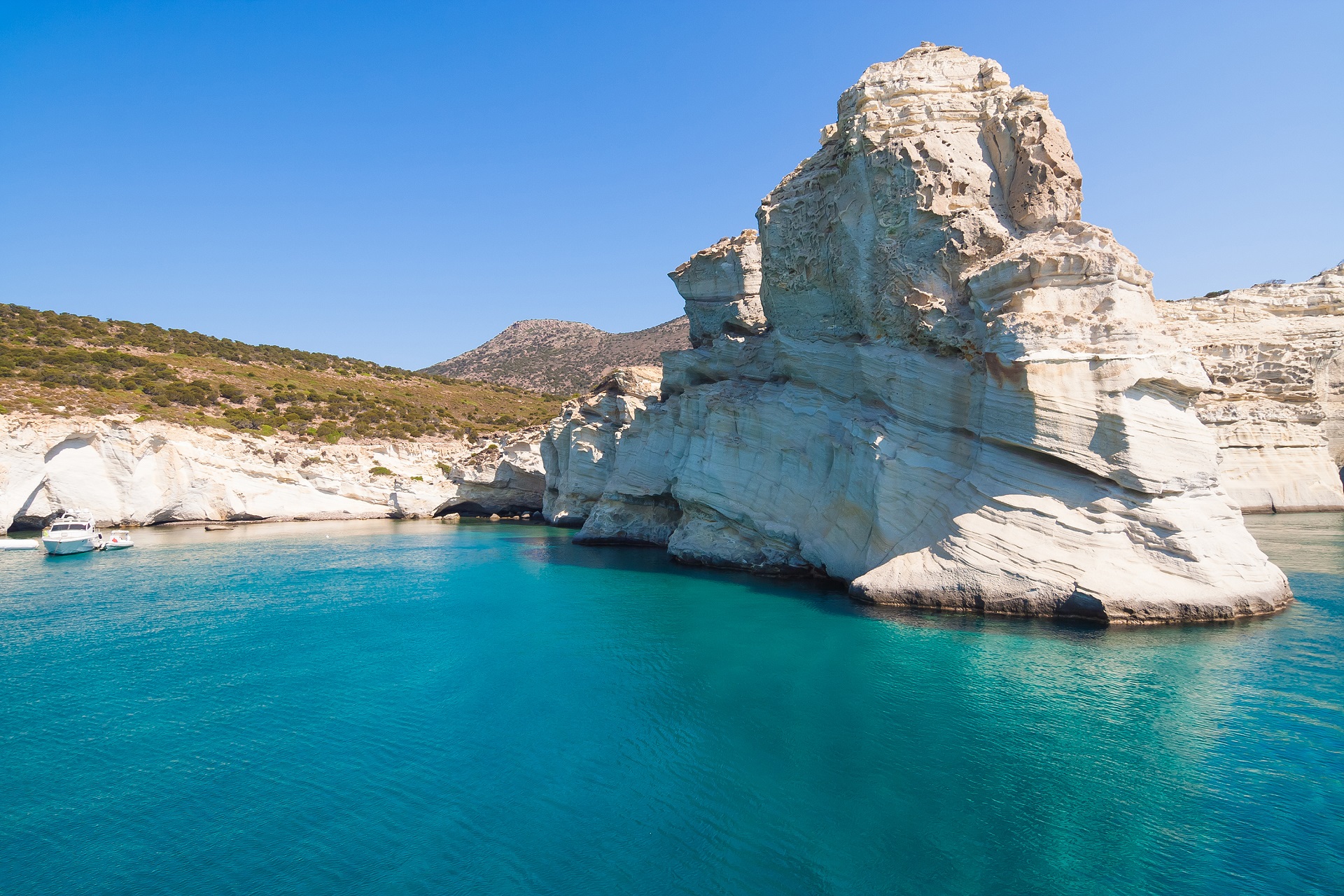
The Archaeology Museum in Plaka is a handsome old building containing many exciting exhibits, including a plaster cast of the famous Venus de Milo. The original was likely carved from Parian marble around 100 BC and was discovered by a local farmer in 1820. It now resides in the Louvre in Paris. A little herd of tiny bull figurines from the Filakopi ancient settlement, dating from 1400 to 1100 BC, is also on display here.
In Paliorema you can combine your swim with a visit to a fascinating geologic site of the island’s mining history. You can rest on the fantastic beach with the colorful pebbles and the fine sand and enjoy your swim while viewing the area’s old quarries for the mining of sulfur. The ruins of abandoned offices, spare parts and personal items of the quarries’ workers, indeed compose an attractive landscape.
Historically, between 1890-1905, the mines were in function, owned by the Greek Company of Public and Municipal Works. In 1905 they were shut down due to the production of cheaper sulfur in the US. The mines resumed full operation in the 1930s when the installations seen today were constructed. The sulfur mines, the Theioryheia, were in operation until 1960, whereas the business was put to a permanent stop in 1978.
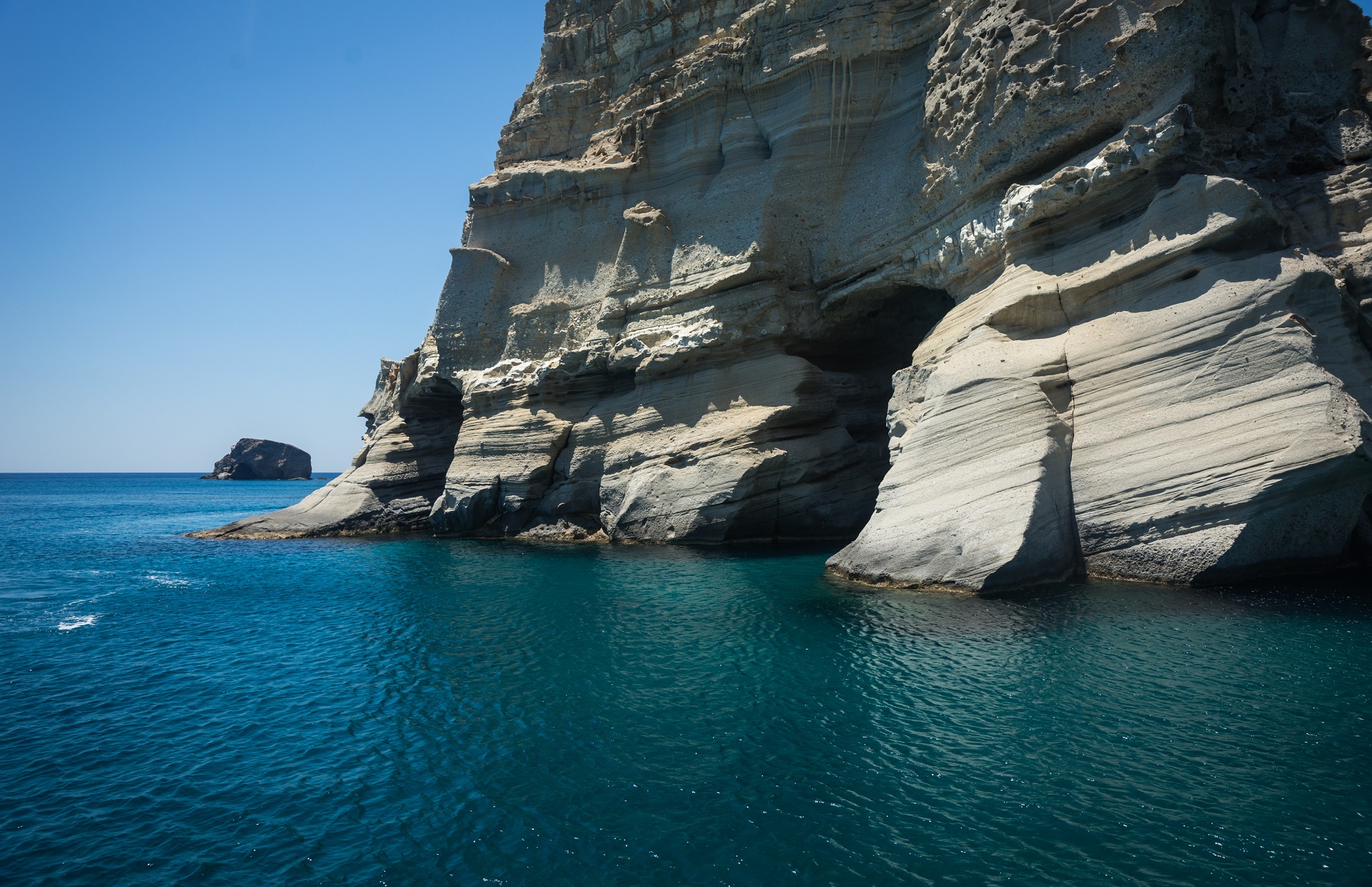
In a quick epilog, you can already tell that, as most Greek islands, Milos has an abundance of amazing landscapes, rich history, sunny and sandy beaches, folklore and fantastic food. Do visit this volcanic Aegean diamond; you will not regret it.
